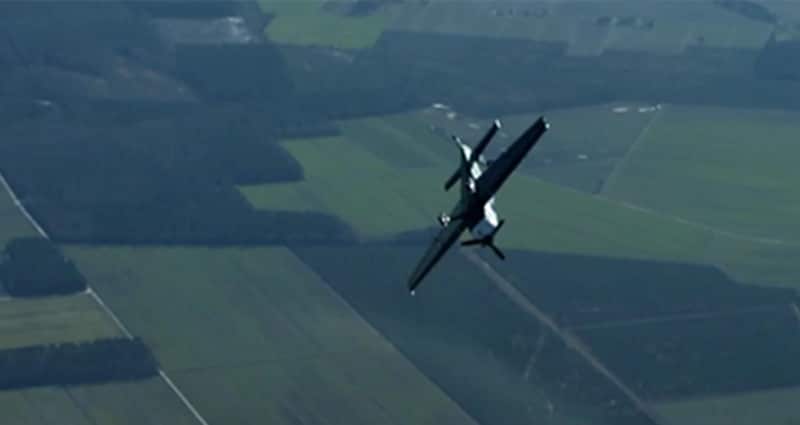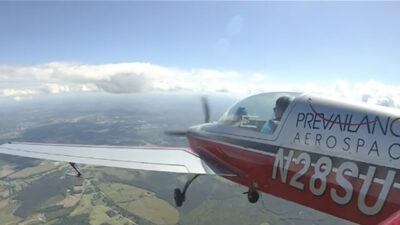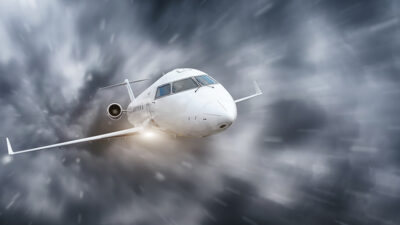Most Valued Insurance Policy Ever!

The discussion of pilots’ over reliance on automation is in the forefront of most aviation accident investigations. With more than 19,000 hours as a pilot and over 11,000 as a line check airman/line evaluator, I am disheartened with the concept that pilots are not effectively flying their aircraft, but I consistently see that reality.
I currently fly for a commercial airline, a formation aerobatic demonstration team and an upset prevention and recovery training (UPRT) safety academy. I can tell you that the latter continues to be the most effective training and separately, the most valued insurance policy available.
As pilots, we collectively fly billions of dollars’ worth of aviation hardware and technology. We train to the highest level of automation for the aircraft that we fly, yet little time is spent with no automation or mixed levels of automation. Programs like the Advanced Qualification Program (AQP) and concepts like “train to proficiency” allow pilots to demonstrate competency in a simulator with no real-world external factors. After one or two iterations, these same pilots are deemed competent.
Training to Failure
On the contrary, consider a SEAL team or fire department where there is a paradigm of training to failure vice the aviation industry’s train to proficiency. These elite teams degrade everything around them until each individual operates in the harshest, most degraded environment because in reality, they must be prepared for that eventuality.
Aviation trains to the lowest level of proficiency aligned with the most basic understanding of our automation. We know how to operate the avionics, but not what happens when the avionics do not function or are functioning in a degraded state. Pilots need to be proficient at every level of automation, including its absence.
It is very easy to get bogged down in the latest accident and subsequently train to address the latest anomaly. A more pragmatic approach is to focus on a firm understanding and practical experience with aerodynamics. This includes high pitch attitude considerations, hand flying and interpreting data vice watching data with the autopilot on. This means walking away from a training evolution with a better understanding and practical experience with adverse conditions and sub-optimal automation performance.
LOCI and Aviation Accidents
Whether I am in an airliner, T-6 or Extra 330, the industry best practices and SOPs align with the FAA Advisory Circular regarding Loss of Control Inflight (LOCI) to ensure the automation is disconnected, attitude and energy state are confirmed and that the wing(s) are not stalled. The actual mechanics vary by platform, but the laws of aerodynamics are universal.
LOCI continues to maintain the top spot as the leading cause of fatal accidents in aviation. The European Union Aviation Safety Agency (EASA) believes LOCI can result from inappropriate manual control inputs or poor automation management often leading to “automation surprises.”1 These “automation surprises” catapult pilots into the startle response and why it is so important to ensure pilots are comfortable in every aircraft attitude with a clear understanding of energy management.
Learning to Manage “Startle” Properly
The FAA continues to describe “startle” as a physiological response to unexpected situations that can cause an associated delay in initiating appropriate recovery action. Training and preparation can reduce startle response time and promote more effective and timely responses.2
It is the startle that throws pilots off their game. Only by managing startle can pilots effectively recover an aircraft from LOCI. The question then becomes, when do you actually feel fear? Or the physiological fight or flight response? It is not in a simulator and it is not during discussions of possible emergencies in a briefing room. It is when something unexpected actually happens.
Please see the video below with a UPRT instructor talking a student through a spin.
If you can manage your own startle response in a dynamic aircraft like those used for UPRT, then you can certainly manage it when required in the aircraft that you fly on a regular basis. The investment in UPRT is insignificant as compared to the benefits of managing pilot startle and being unafraid to remove the automation. For these reasons alone, UPRT is the most valued insurance policy to protect aviation assets.
Resources
1 Loss of Control In-Flight in GA, EASA, Retrieved on 4/25/2019 from: https://www.easa.europa.eu/easa-and-you/general-aviation/flying-safely/loss-of-control
2 Startle Response, FAA, Retrieved on 4/25/19 from: https://www.faa.gov/news/safety_briefing/2017/media/SE_Topic_17_06.pdf

Prevailance Aerospace is a UPRT provider that has been working with corporate, government, and general aviation pilots to improve safety in the aviation industry. Prevailance Aerospace uses Extra 300 Series Aircraft for training and our pilots are experienced aviation professionals from various military and general aviation backgrounds. We know that successful aviation endeavors are accomplished through an uncompromising commitment to safety, impeccable professionalism, tremendous attention to detail, and constant improvement.
http://prevailanceaerospace.com
© 2024 Prevailance Aerospace. All Rights Reserved.
Next ArticleRelated Posts

Three Considerations That Set Pilots Up for Success
Constantly reviewing aviation accidents and incidents is challenging. As an instructor, it is not only the injuries and fatalities that make it hard, but the sheer magnitude of avoidable aspects of each incident. These safety reports prove that every Pilot in Command (PIC) is accountable for what transpires.

Understanding the Challenge of Turbulence-Related Injuries in Business Aviation
The challenge of managing air turbulence in business and private aviation is becoming increasingly evident due to the growing number of turbulence-related incidents affecting aircraft operators across the industry.

